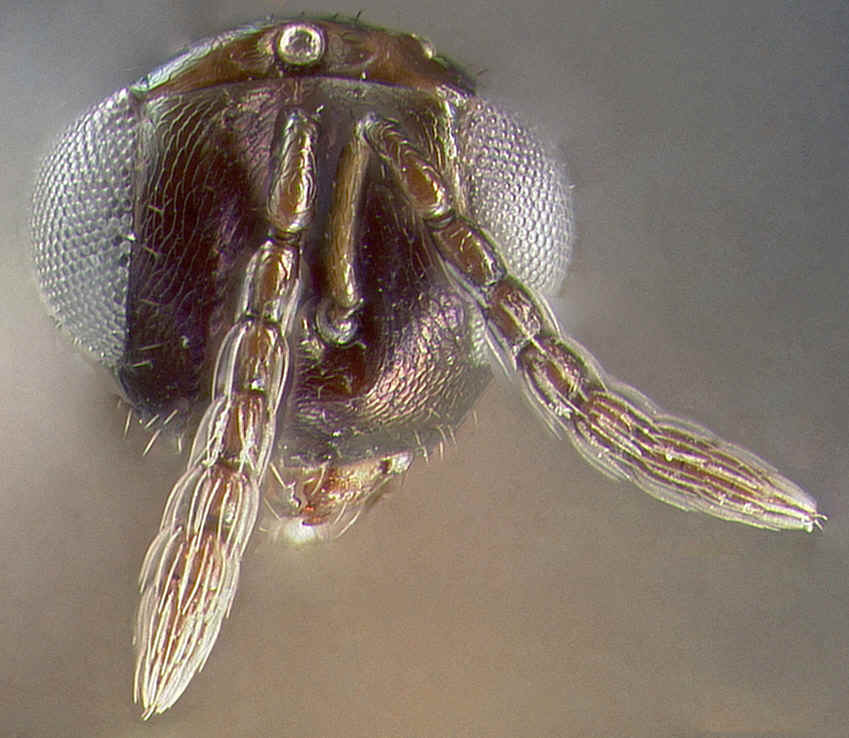
return to: home prev Eul 1 Eul 4 ent 1 eul 1 eud1 eud5
4. Forewing with indistinct or no setal tracks radiating from stigma and female antenna (b1) with both pedicel and 1st funicular segment 2x longer than broad, apical funicular segments much shorter than basal ones. Male antenna (c1) with nodose flagellomeres and 1st funicular segment with two complete whorls of erect setae, sometimes with 5 funicular segments. Propodeum with median carina, but not strongly rugose. [Note: This genus has not been formally synonymized with Euderus, but has recently been treated as a likely synonym. Some species form apparent intermediates between the two genera, but I prefer to define Parasecodella strictly as above. The intermediates will key to Euderus.]
4'. Forewing (aa1) usually with distinct setal tracks radiating from stigma, and basal funicular segments (bb1) usually not both 2x longer than broad or longer than apical funicular segments (never both forewing and antennal character present at the same time, although a few have one of these characters). Male antenna usually similar to female antenna (bb1), but sometimes as above, rarely with 5 funicular segments. Propodeum (dd1) strongly rugose in subgenus Secodelloidea Girault.
| aa1 | |
|---|---|
|
Image credits: aa1, bb1: Coote (1994). c1: Boucek (1988). dd1: Schauff, et al. (1997).